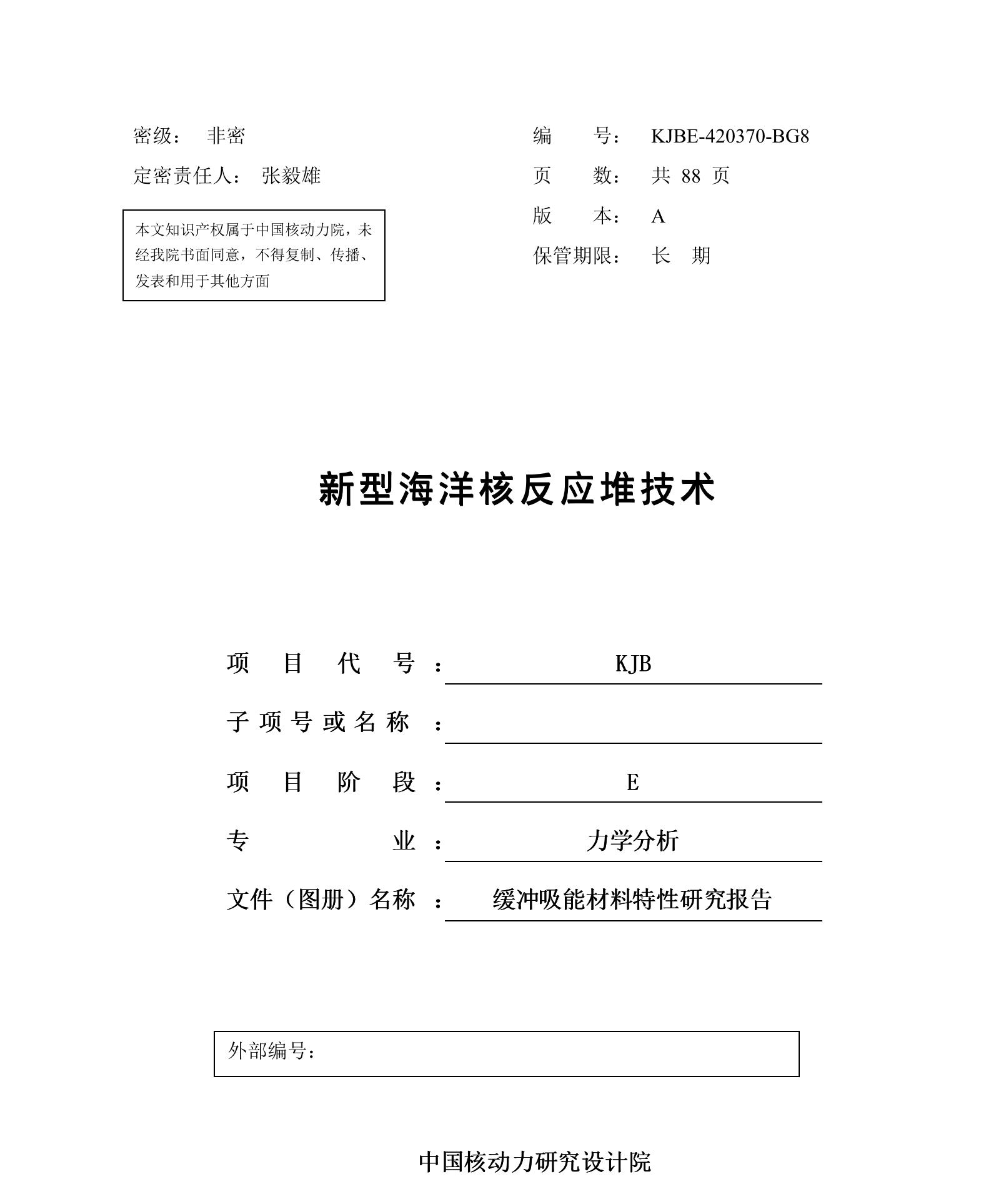
本报告以新型深海铅铋合金冷却反应堆为主要研究对象,对耐压壳上敷设声学覆盖层的缓冲吸能特性进行研究。外部敷设不同厚度的声学覆盖层对耐压壳、反应堆压力容器、堆内构件外层壳体上测点的冲击加速度存在一定的影响,对反应堆压力容器、堆内构件外层壳体的位移影响不大。外部敷设不同厚度的声学覆盖层可能会给耐压壳和内部设备带来不利影响,等效塑性应变会增大。外部敷设声学覆盖层会使耐压壳、反应堆压力容器、堆内构件外层壳体的内能增大,声学覆盖层自身的内能与声学覆盖层厚度呈正相关;声学覆盖层敷设部位对耐压壳测点的加速度和位移产生影响。与不敷设声学覆盖层、在耐压壳外部敷设声学覆盖层相比,在耐压壳内部敷设声学覆盖层可以有效减小耐压壳的等效塑性应变。与不敷设声学覆盖层相比,在耐压壳内部敷设声学覆盖层、耐压壳外部敷设声学覆盖层对反应堆压力容器、堆内构件外层壳体的等效塑性应变数值和发生区域影响不大。与不敷设声学覆盖层相比,在耐压壳外部敷设声学覆盖层会使耐压壳、反应堆压力容器、堆内构件外层壳体的内能增大,在耐压壳内部敷设声学覆盖层会使耐压壳、反应堆压力容器、堆内构件外层壳体的内能减小。在耐压壳外部敷设声学覆盖层时声学覆盖层自身的内能大于在耐压壳内部敷设声学覆盖层时声学覆盖层自身的内能。建议在耐压壳内部敷设声学覆盖层;声学覆盖层设置空腔会增大耐压壳、反应堆压力容器、堆内构件外层壳体的等效塑性应变。与不设置空腔相比,声学覆盖层设置空腔会使反应堆压力容器、堆内构件外层壳体以及声学覆盖层自身的内能增大。建议声学覆盖层不设置空腔。
In this paper, a new type of deep-sea lead-bismuth alloy cooled reactor is used as the main research object to study the energy absorption characteristics of the acoustic coating on the pressure hull. The acoustic covering layer with different thickness has certain influence on the impact acceleration of measuring points on the outer shell of the pressure vessel, reactor pressure vessel and reactor inner component, but has little influence on the displacement of the outer shell of the reactor pressure vessel and reactor inner component. External acoustic cladding of different thicknesses may have adverse effects on the pressure hull and internal equipment, and the equivalent plastic strain will increase. The external acoustic cladding increases the internal energy of the outer shell of the pressure hull, reactor pressure vessel and reactor inner components, and the internal energy of the acoustic cladding is positively correlated with the thickness of the acoustic cladding. The location of acoustic covering layer affects the acceleration and displacement of pressure hull measurement point. Compared with laying acoustic cladding outside the pressure shell without acoustic cladding, laying acoustic cladding inside the pressure shell can effectively reduce the equivalent plastic strain of the pressure shell. Compared with no acoustic cladding, the installation of acoustic cladding inside and outside the pressure vessel has little effect on the equivalent plastic strain value and occurrence area of the reactor pressure vessel and the outer shell of the reactor inner component. Compared with no acoustic covering layer, laying acoustic covering layer outside the pressure hull will increase the internal energy of the pressure hull, reactor pressure vessel and outer shell of the reactor inner component, while laying acoustic covering layer inside the pressure hull will reduce the internal energy of the pressure hull, reactor pressure vessel and outer shell of the reactor inner component. The internal energy of the acoustic covering layer is greater than that of the acoustic covering layer when it is laid outside the pressure shell. It is recommended to lay acoustic cladding inside the pressure hull; The equivalent plastic strain of the outer shell of the pressure hull, the reactor pressure vessel and the inner component of the reactor will be increased if the cavity is installed in the acoustic covering. Compared with no cavity, the internal energy of the reactor pressure vessel, the outer shell of the reactor inner component and the acoustic coating itself will be increased if the acoustic coating is equipped with cavity. No cavities are recommended for acoustic cladding.